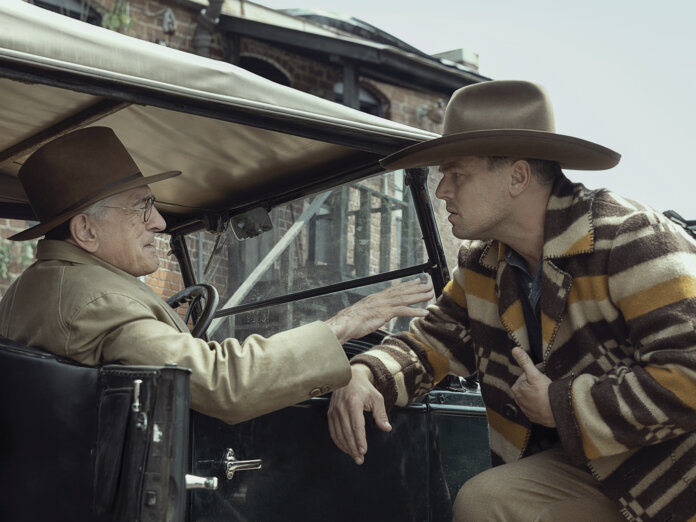Sometimes it feels likes like Martin Scorsese is waging a one-man campaign to compensate for American cinema’s capitulation to the forces of Marvel, Mattel and franchise exploitation. Killers Of The Flower Moon is his latest three-hour plus epic and as heartfelt, beautiful and brutal as the films with which he made his name. But in a way it’s one more excursion into the Martin Scorsese extended universe, his long investigation into the origins of American violence.
This time the setting is Osage County, a godforsaken corner of Oklahoma, where the discovery of oil in the early 20th century made the Osage Native Americans the richest people per capita on earth. This doesn’t sit well with their white neighbours, who under the charismatic leadership of cattle rancher William “King” Hale (a magnificently malign Robert De Niro, sporting devilish driving goggles) begin a systematic campaign of genocide by subterfuge. The Osage are, one by one, over many years, found shot, poisoned or blown up with local investigators typically clueless. Forget it, Jake, it’s Osage Town.
One of the longer games Hale plots is strategic marriage, and so he enlists his nephew, feckless doughboy Ernest (Leonardo DiCaprio), just back from the war, to seduce and marry Mollie Kyle (Lily Gladstone), heiress to a large part of the Osage fortune. Ernest takes to the task with gusto, to the extent of falling in love with Mollie, though this doesn’t prevent him from assisting his uncle in the murder of her closest relatives.
Killers… is adapted from David Grann’s magisterial 2017 history, though with one key twist. Where Grann focused on the role of newly formed FBI and Texan ranger Tom White in bringing Hale to justice, Scorsese and DiCaprio felt they didn’t want to produce one more white saviour narrative – they wanted to find the heart of the story. And so they focus on Ernest – torn between the woman he loves and the demonic uncle he fears.
You might say this no great improvement. The Osage are depicted here as a taciturn people, mocking the ceaseless “blackbird chatter” of the white folks, and Gladstone (maybe best known for her roles in Kelly Reichardt’s Certain Women) plays Mollie with a wry, understated wit that slowly curdles into implacable scorn. But for long stretches of the film she’s a silent victim, while the film focuses on Ernest’s exasperating moral cowardice. Among his many credits, you might remember screenwriter Eric Roth for his work on Forrest Gump – and DiCaprio’s Ernest is similarly slow-witted, hardly a character who can bear the weight of the narrative. There’s a vast cast (Uncut readers will be tickled to see Jason Isbell, Sturgill Simpson and Jack White among the minor players), but the Native American characters are largely corpses, meeting their ends in increasingly gruesome ways.
The film is beautifully realised and sometimes startlingly inventive, with spiritual awe for the Osage ceremonies. Yet the inability to find a voice for the Osage feels like a profoundly missed trick. Nevertheless, there is so much to relish about this rich, absorbing, horrifying yet humane movie. At the age of 80, Martin Scorsese is at the top of his game.


